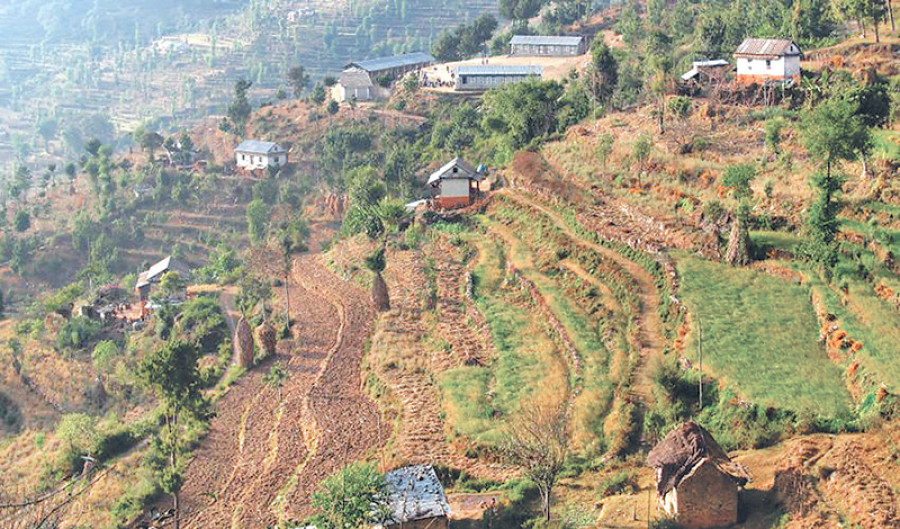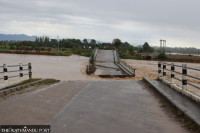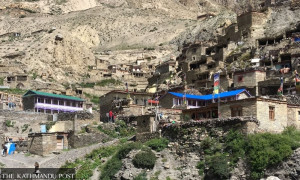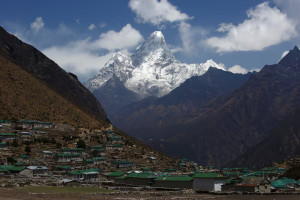Thu, Nov 6, 2025
National
Nepal gearing up to draft agroforestry policy
Nepal is gearing up to draft a policy that promotes agroforestry in the country in what can be a breakthrough move towards protecting the forests and improving livelihood of farmers.
bookmark
Published at : November 5, 2017
Updated at : November 5, 2017 08:32
Kathmandu
Nepal is gearing up to draft a policy that promotes agroforestry in the country in what can be a breakthrough move towards protecting the forests and improving livelihood of farmers.
Once drafted, Nepal will become the second country in the world after India to have such a government policy that encourages blending of forestry and agriculture.
In 2014, India adopted the National Agroforestry Policy, which has been yielding remarkable results, directly benefiting farmers that grow trees and crops on their farmland.
Agroforestry is a method and system of land management involving the simultaneous cultivation of farm crops and trees; agriculture incorporating the growing of trees.
Speaking during a policy dialogue programme in Kathmandu on Saturday, Yubak Dhoj GC, secretary at the Ministry of Forest and Soil Conservation, said practising agroforestry is pretty much feasible in Nepal, which has nearly 45 percent forest coverage of its total area.
“Agroforestry should be promoted in Nepal because of our larger forest coverage, which is greater than neighbouring India, and also in recent times untilled land is increasing in the country. We should utilise the barren land through agroforestry,” said GC, expressing hope that the new policy would address the concerns of poor farmers and benefit them greatly.
Nepal started its work to support agroforestry practices nearly three years ago when in 2015, the then government endorsed the “Kathmandu Declaration on Agroforestry”.
The declaration had pointed out the need of a more focused and coordinated strategy and approach to promote agroforestry among various stakeholders through National Agroforestry Policy for Nepal.
According to the declaration, the proposed policy would encourage easing of regulatory constraints and facilitate the development of feed and fodder resources, income generation, food, nutritional and energy security, controlling land
degradation and development of various agroforestry models for different agro-ecological zones.
Since then four ministries of the government—Ministry of Forest and Soil Conservation (MoFSC), Ministry of Agricultural Development (MoAD), Ministry of Population and Environment (MoPE) and Ministry of Livestock Development (MoLD)—with technical support from the World Agroforestry Centre (WAC), also called the International Centre for Research in Agroforestry (ICRAF), have been working on promulgating an agroforestry policy for Nepal.
The Inter-ministerial Coordination Committee has been collecting feedback on agroforestry policy from different sectors that include policy makers, farmers and forest promoters, and civil society.
Dr Javed Rizvi, regional director, South Asia programme of WAC, said Nepali farmers had been practising agroforestry since the time immemorial which would make it more feasible for Nepal.
“Farmers have been cultivating trees on farmland for a long time, which is now called agroforestry. This is not a new concept for Nepal,” said Rizvi. “Local knowledge and science-based intervention are needed for sustainable development of forest in Nepal.”
Sharing Indian experience of agroforestry since its adoption of a policy, Rizvi said local farmers have been supplying more than 60 per cent of timber required for the Indian market that accounts for $24billion annually.
“Agroforestry has the potential to protect farming communities by providing alternative resources, diversify their income opportunities and also mitigate the impact of climate change through absorbing atmospheric carbon,” added Rizvi.
Nepali stakeholders, however, raised concerns about various legal constraints that might hinder agroforestry practices in the country.
There are 32 national polices that talk about agroforestry, but all of them lack clarity, according to participants.
Murari Raj Joshi, a consultant for the IMCC for designing the policy, said there are various policies that talk about agroforestry but they lack clarity when it comes to institutional framework.
“Besides clearly drawing the roles and responsibilities of different agencies, the new policy should declare an agroforestry super zone for the areas where the forest coverage is poor,” said Joshi.
Stakeholders said that promotion of agroforestry would merely remain an idea on papers if the government refused to loosen the legal restraints.
“There are already many provisions that contradict each other and restrict hassle-free trade of timber and forest products. Without legal flexibility, agroforestry cannot thrive here,” said Bishnu Hari Pandit, chairperson of the Kathmandu Forestry College.
Benefits
- The total output per unit area of tree/ crop/ livestock combinations is greater than any single component alone
- Crops and livestock protected from the damaging effects of wind are more productive
- New products add to the financial diversity and flexibility of the farming enterprise
- Agroforestry helps to conserve and protect natural resources by, for example, mitigating non-point source pollution, controlling soil erosion, and creating wildlife habitat
- Substantial improvement of the economic and resource sustainability of agriculture
Most Read from National
7 climbers including 5 foreigners killed in Yalung Ri avalanche
Altitude Air helicopter crashes in Solukhumbu
Tourist guide dies of altitude sickness
Two foreign climbers die after expeditions to Ama Dablam mountain
No role of Indian Immigration in disallowing a Nepali citizen from travelling, Indian government says
Editor's Picks
E-PAPER | November 06, 2025
×




 24.12°C Kathmandu
24.12°C Kathmandu














